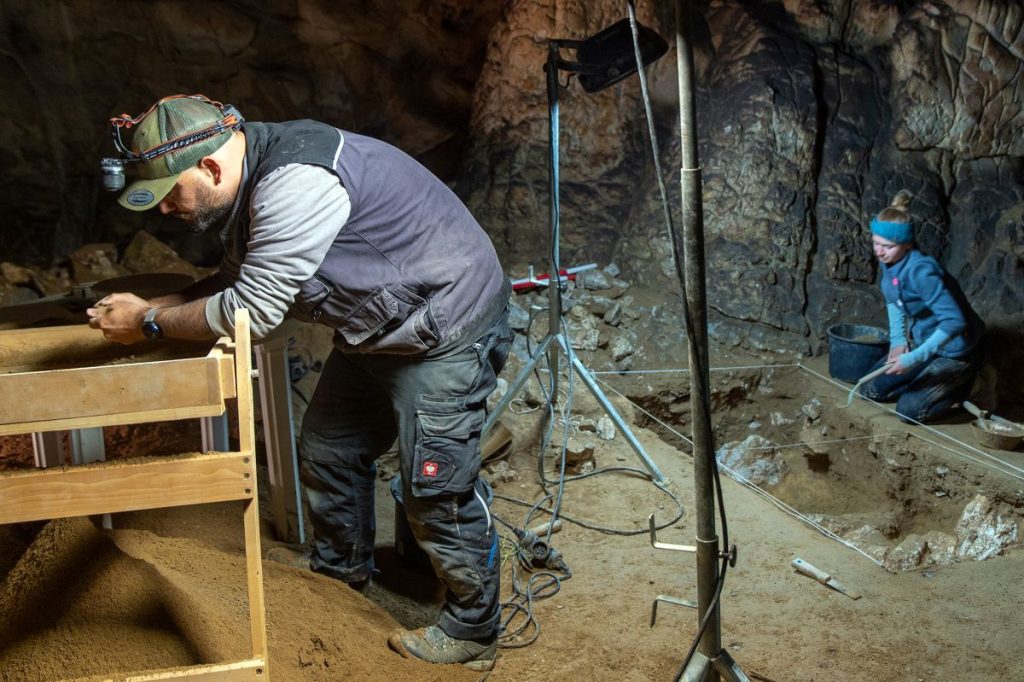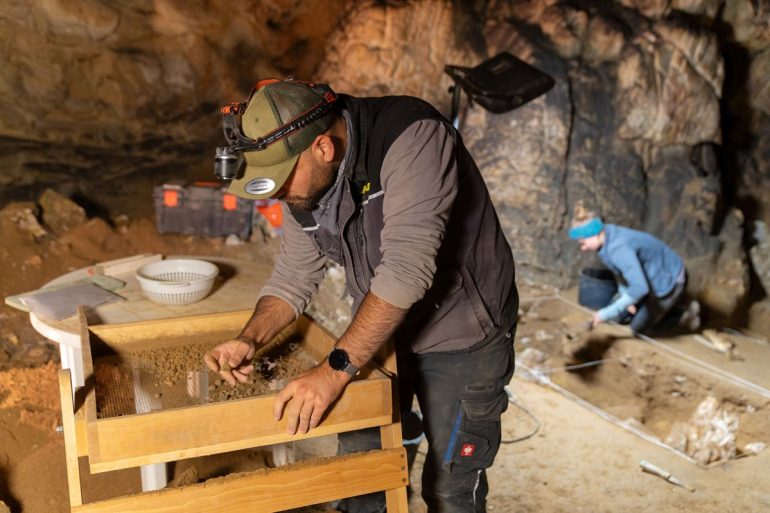This year’s excavation projects in the Kateřinská Cave of the Moravian Karst have revealed three ornaments – shells of the Danube toothed snail with a ground opening – which according to archaeologists date from the Late Paleolithic to Middle Neolithic period, i.e. between 12 and 6 thousand years ago.
The excavations were led by archaeologists from Palacký University in cooperation with the Institute of Nuclear Physics at the Czech Academy of Sciences and the Moravian Regional Museum.
Over the years, scientists have undertaken many excavations to find more about the cave’s history and its inhabitants. The systematic research of the cave started in the second half of the 19th century with the work of Dr Jindřich Wankel, a physician from Blansko.

The cave, known for a long time because of the legend associated with its name, was opened to the public a year after its discovery in 1909 by a team of speleologists from the Brno Scientific Club led by Professor Karel Absolon, Wankel’s grandson.
Since 2017, archeological and epigraphic research has been carried out in Kateřinská cave. One major discovery since then was the oldest cave paintings found in the Czech Republic, which are up to 7,200 years old.
“To date, a total of 15 prehistoric drawing objects are known, located in various places in the Kateřinská Cave. Archaeological research continued for the third year in the inner parts of the cave near the discovered prehistoric drawings,” said Petr Zajíček from the Czech Cave Administration (SJ ČR) explaining the results of the research.
According to archeologists, the three ornaments found this year are anywhere between 12 and 6 thousand years old. Zajíček explains: “the find could thus correspond not only to earlier findings in the cave portal, but also to previously found prehistoric drawings.”

For the past two years, researchers did soundings in the Ice Tunnel and the Nameless Tunnel. It was in the latter that there were found in the sediments the remains of a mint workshop, a prehistoric chipping industry, fragments of prehistoric and mediaeval ceramics, and fragments of a mysterious slate tablet with a bas-relief reminiscent of a procession of twelve Hittite gods.
“During the two-week research in August of this year, other cuttings from the money-making workshop, chipped industry and prehistoric and mediaeval ceramic shards were found,” said Zajíček.
The bones of Pleistocene animals, mainly cave bears, were found in the sediments near the “Mozek” (“Brain”) formation, making the Kateřinská cave a unique site of mass skeletons of the same species.







